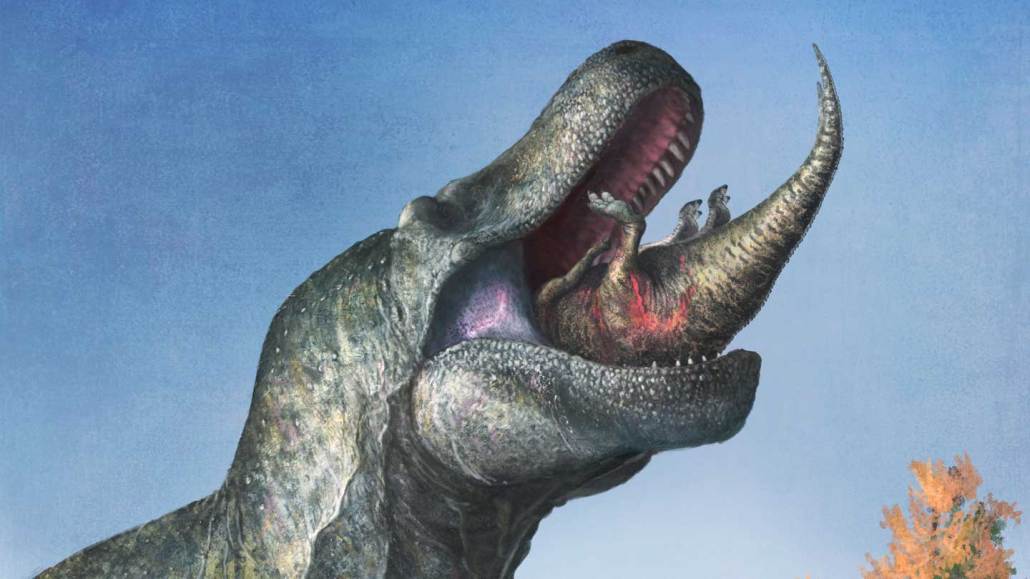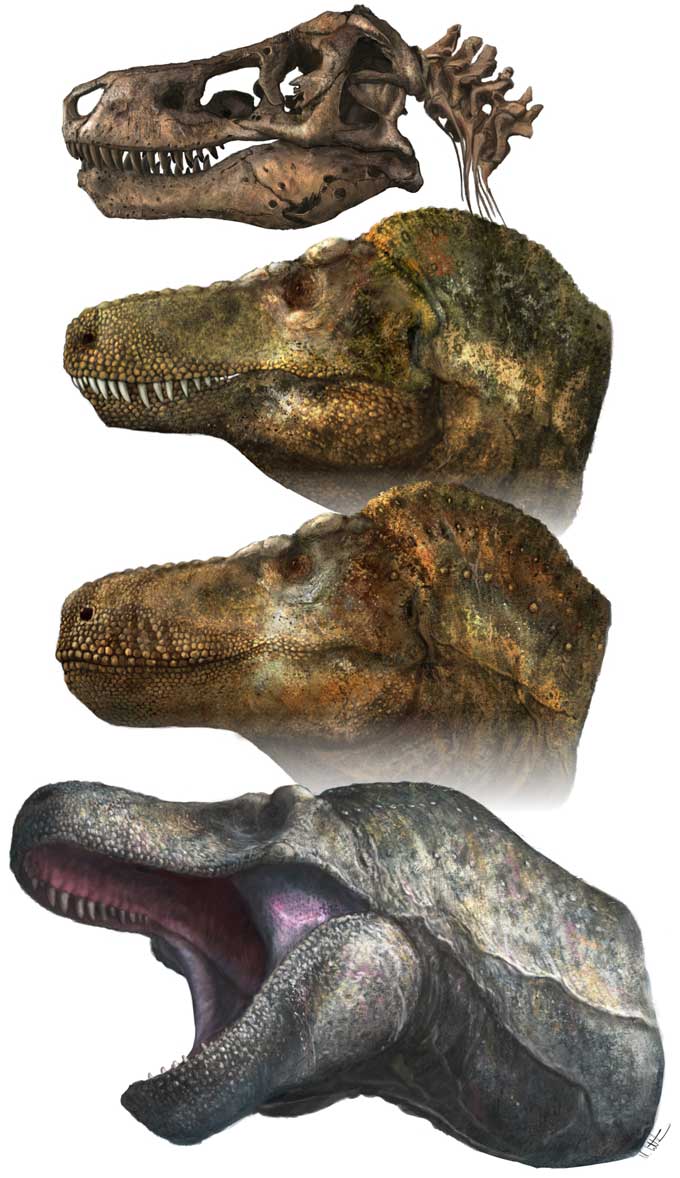T. rex may have hidden its teeth behind lips
Fossil evidence challenges how these sharp-toothed predators are commonly portrayed

A Tyrannosaurus engulfs a smaller dino with its huge, lipped mouth. Dinosaurs like Tyrannosaurus have long been portrayed as lipless. But new research challenges that picture.
Mark P. Witton
Share this:
- Share via email (Opens in new window) Email
- Click to share on Facebook (Opens in new window) Facebook
- Click to share on X (Opens in new window) X
- Click to share on Pinterest (Opens in new window) Pinterest
- Click to share on Reddit (Opens in new window) Reddit
- Share to Google Classroom (Opens in new window) Google Classroom
- Click to print (Opens in new window) Print
By Jake Buehler
In movies and TV shows, Tyrannosaurus rex almost always has its big, sharp teeth on display. But in real life, these dinosaurs may have kept their pearly whites mostly tucked behind lips.
A new study compared fossilized and modern reptile skulls and teeth. The bones suggest that like Komodo dragons today, T. rex and its kin probably had lots of soft tissue around the mouth. That tissue could have functioned as lips. The findings, reported March 31 in Science, challenge common portrayals of T. rex and its relatives.
“This is a nice, concise answer to a question that has been asked for a long time by dinosaur paleontologists,” says Emily Lessner. She’s a paleontologist at the Denver Museum of Nature and Science in Colorado. Lessner wasn’t involved in the study. But she’s intrigued by the possibility that dinos like T. rex had lips. This could change how we think the animals ate, she says.
Looking for lips
T. rex belonged to a group of dinosaurs called theropods. Their closest living relatives with teeth are reptiles like crocodiles and alligators, which lack lips. Plus, T. rex’s teeth tended to be large — potentially too big to fit in the mouth. So, one might assume that these fearsome creatures had their chompers constantly exposed.

But almost all modern land animals with backbones have liplike coverings over their teeth. Why should T. rex and other nonbird therapods be any different?
Thomas Cullen and his colleagues wanted to find out. Cullen is a paleontologist at Auburn University in Alabama. His group compared fossils of theropod skulls and teeth with skulls and teeth from living reptiles.
Small passages through the bones called foramina (Fuh-RAA-mi-nuh) offered some hints about T. rex lips. These passages are found in the jaws of theropods and some other reptiles. They route blood vessels and nerves to soft tissue around the mouth. In lipless crocodilians, these foramina are scattered across the jaw. But in lipped reptiles like lizards, the little holes are lined up along the edge of the jaw near the teeth. Fossils showed that Tyrannosaurus had a row of jaw pores like those seen in lipped reptiles.
Enamel in theropod and crocodilian teeth also yielded clues. When enamel dries out, it wears down more easily. The researchers found that the side of alligator teeth that are continually exposed erode more than the wetter side facing the inside of the mouth. Theropod teeth are more evenly worn down on both sides. This suggests that their teeth were kept covered and moist by lips.
Debate still rages
Not all paleontologists buy the new results. The study “can be summed up in two words: completely unconvincing,” says Thomas Carr. He has studied tyrannosaurs at Carthage College in Kenosha, Wisc.
In 2017, Carr and his colleagues showed that the jaw bones of tyrannosaurs had a rough, wrinkled texture. The researchers also found that crocodilians have this same bone texture beneath the lipless, scaly margins of their jaws.
“In many cases,” Carr says, “soft tissues leave signatures on bone.” Those signatures can tell you what sat on top of the bone in animals whose skin or scales haven’t been preserved, he says. But the new research did not account for the texture of facial bones. And those textures clearly show that tyrannosaurs “had flat scales, like in crocodilians, all the way down to the edges of the jaws,” Carr says.
Cullen disagrees. Not all theropods had rough bones, he says. Young tyrannosaurs and smaller theropod species had smooth bones similar to a lizard’s. Maybe these animals had lips and then lost them over their life, Cullen says. But “I don’t think there is really any modern example of that kind of thing happening.”
Discovering a mummified tyrannosaur with preserved facial tissues, Carr says, could settle who had lips and who didn’t.







